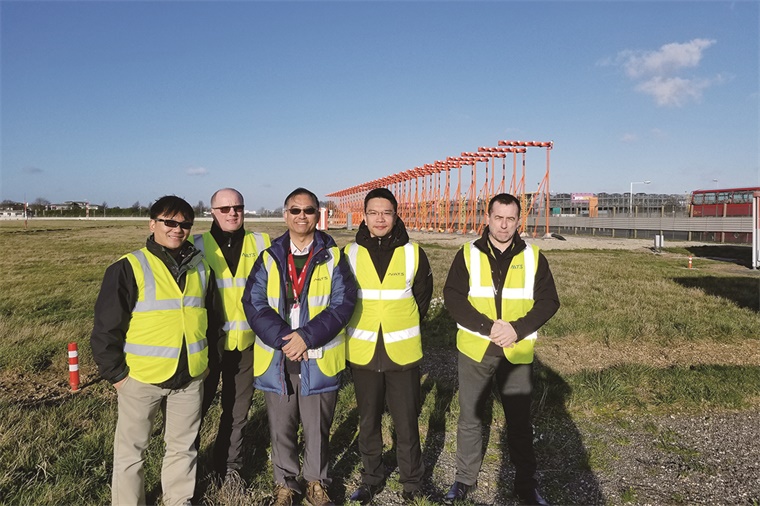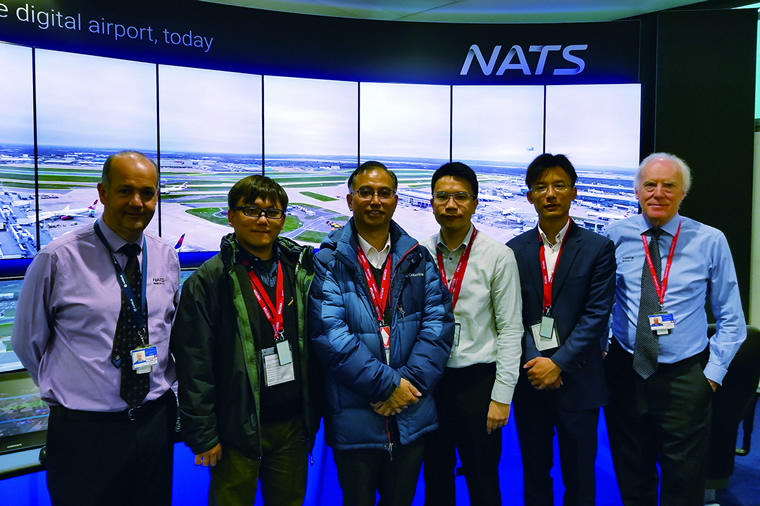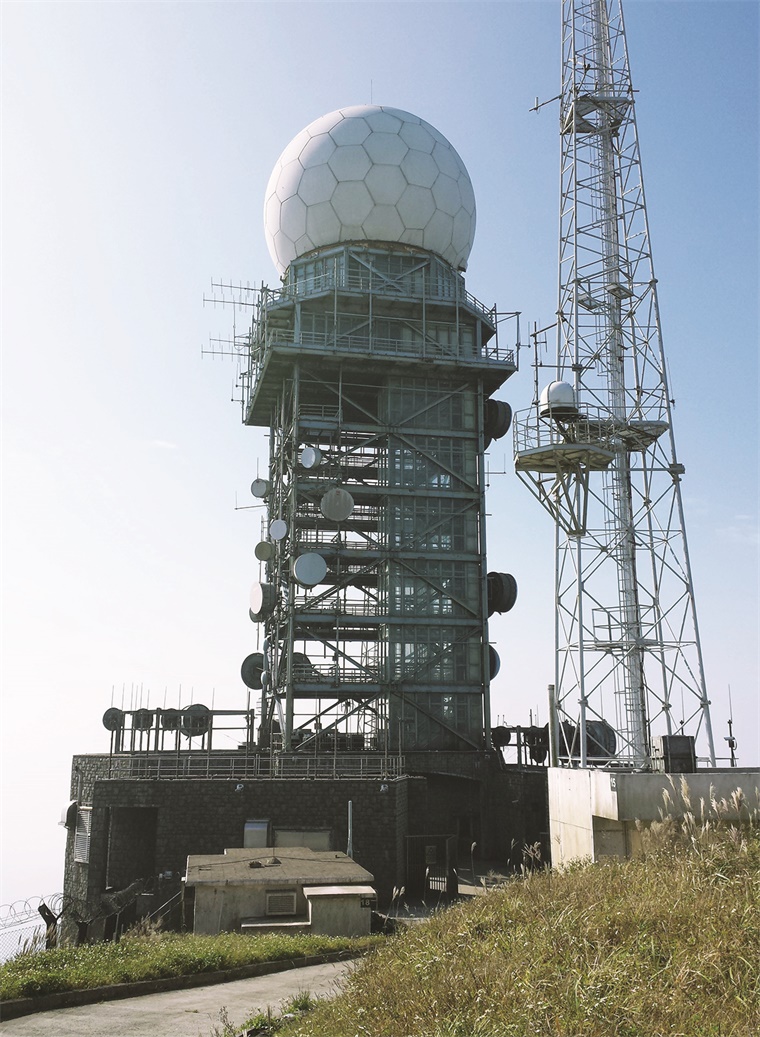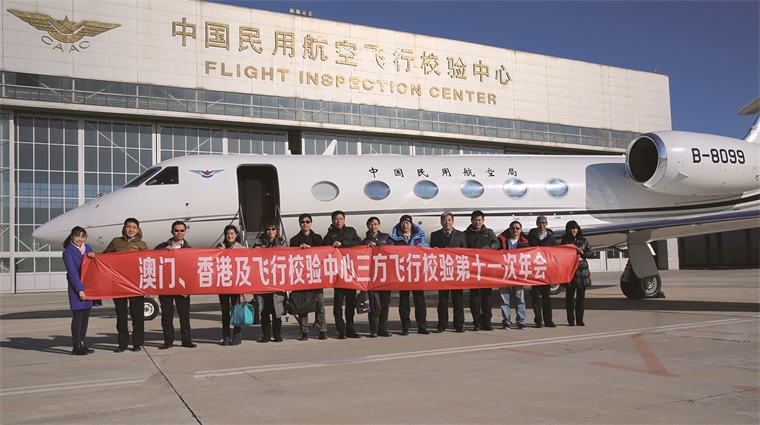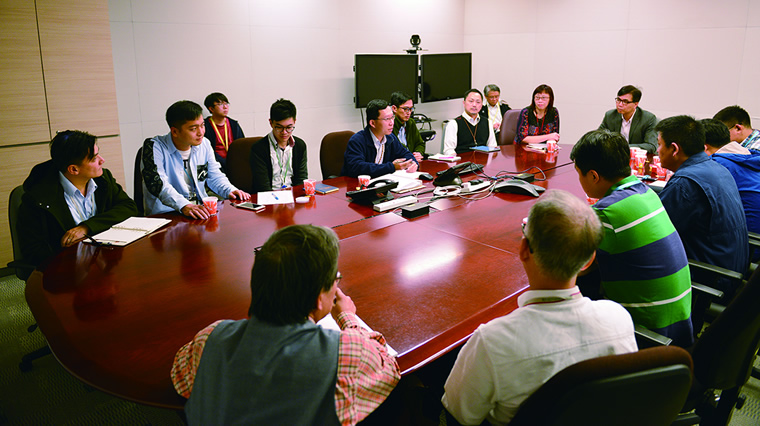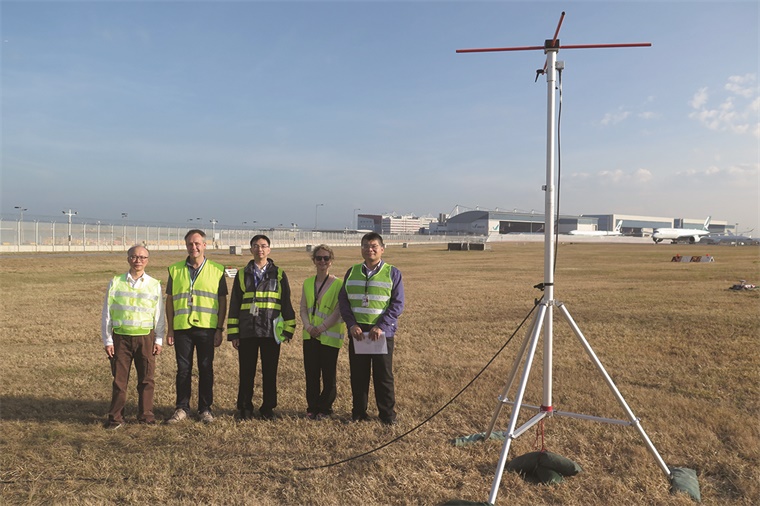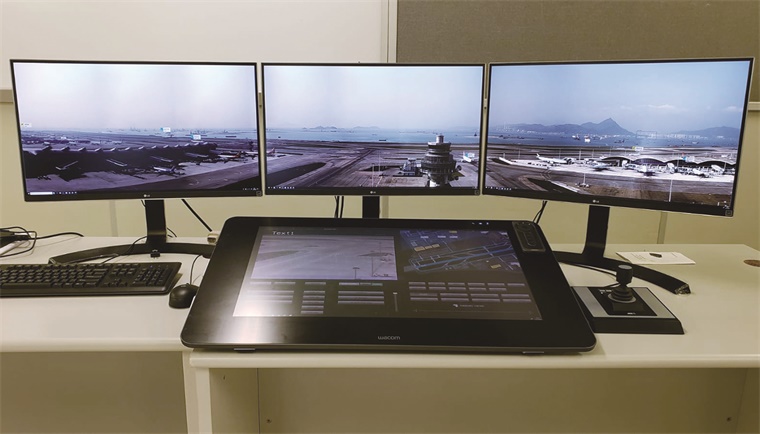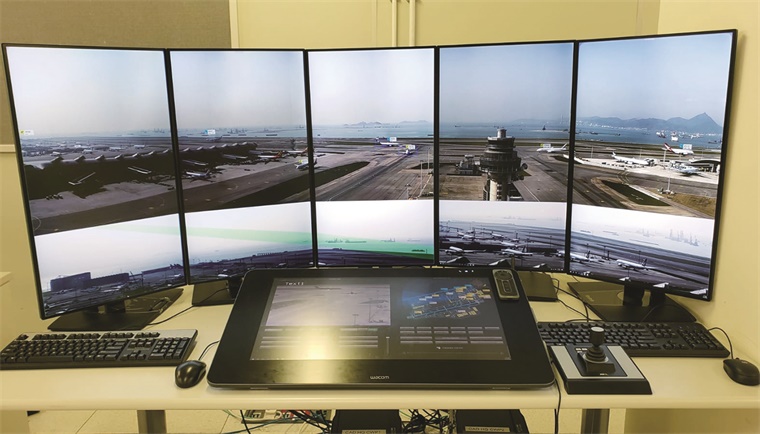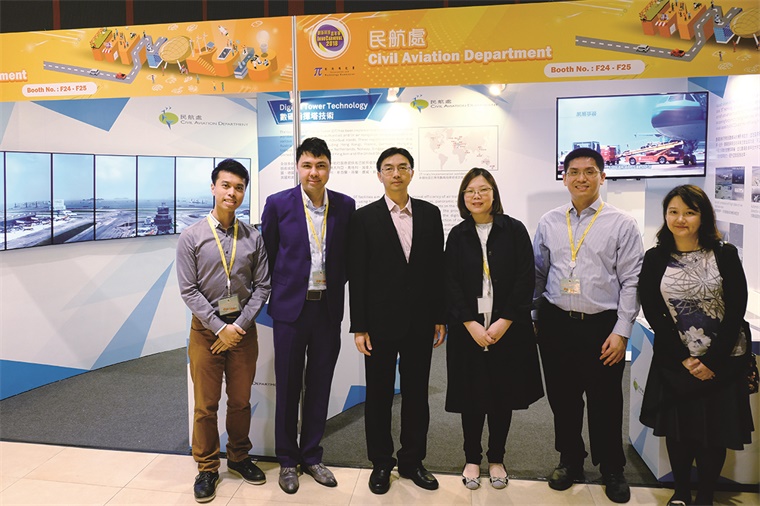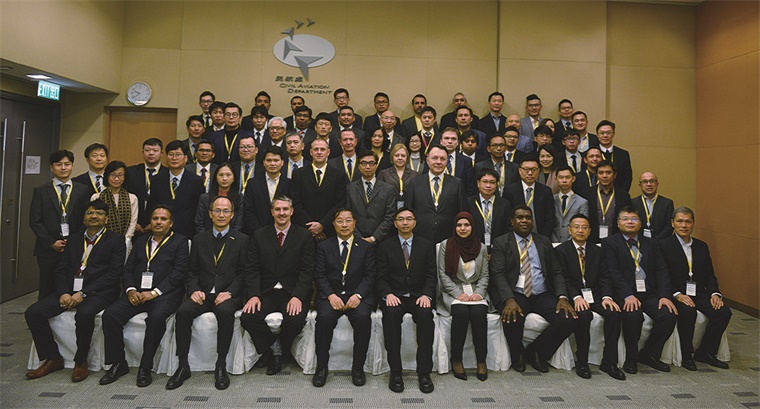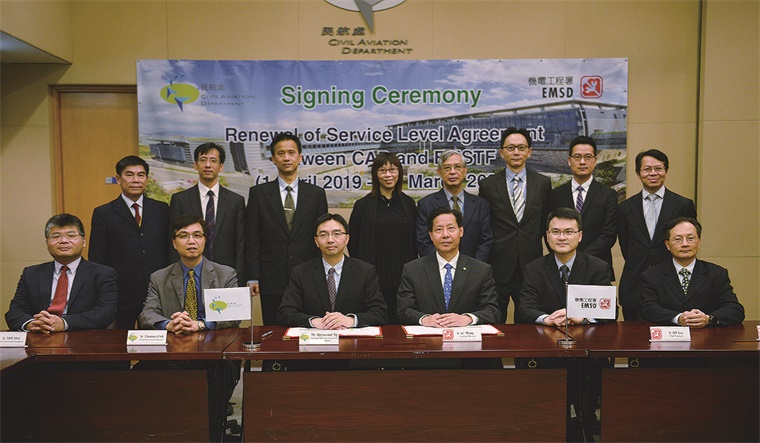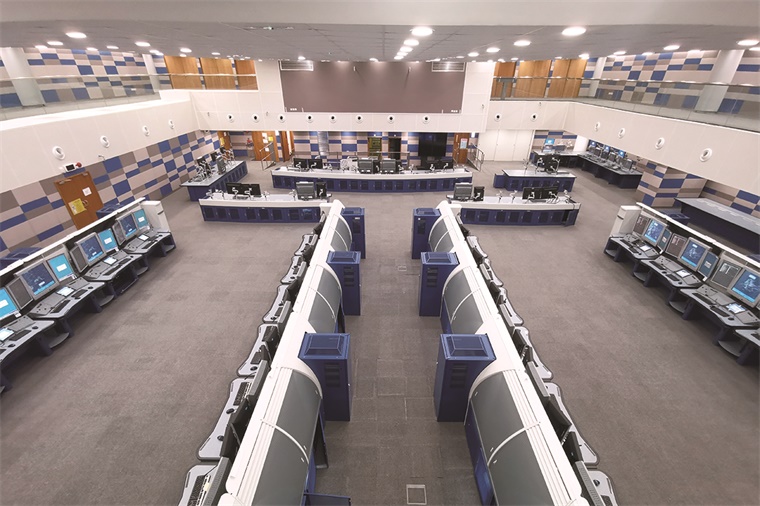The Air Traffic Engineering Services Division (AESD) is responsible for the design, planning, coordination, provision, commissioning, enhancement and maintenance of air traffic control (ATC) systems as well as communications, navigation and surveillance facilities.
Replacement of ATC Systems
With the new Air Traffic Management System (ATMS) fully commissioned in November 2016, all of the eight major systems in East ATC Centre and North ATC Tower have been put into operational use.
Since the full commissioning, the new ATMS had successfully handled the increased traffic during the traditional busy travel periods of Christmas, New Year, Lunar New Year, Easter and summer holidays. During the peak air traffic flow of the Lunar New Year in February 2019, the ATMS handled 2 467 flights on 2 February 2019, setting a new single-day record. In 2018, the total number of aircraft movements handled by the ATMS increased by 7.1% as compared with 2017.
Weather-wise, in September 2018, the ATMS handled 2 130 aircraft movements in a 24-hour period following Super Typhoon Mangkhut. The ATMS performed satisfactorily and no irregularity was observed during the period. All these demonstrate the capability of the ATMS in coping with the challenges brought by adverse weather and clearing the traffic backlogs caused by severe weather.
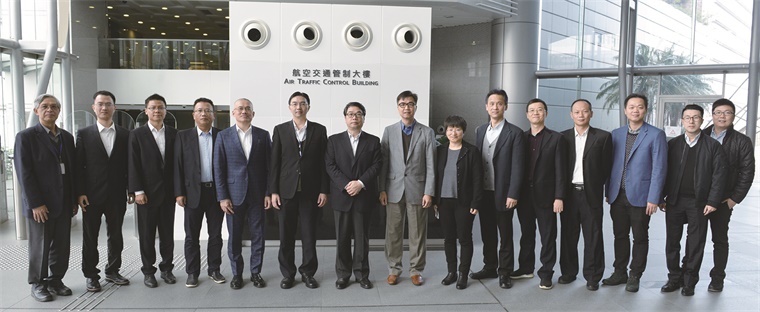
In December 2018, the CAD shared the experience on the ATMS transition with representatives from Middle and South Regional Air Traffic Management Bureau of the Civil Aviation Administration of China during the 11th Xisha Annual Services Review Meeting.
Experience Sharing with Overseas Air Navigation Service Providers (ANSPs)
(i) Visit to Heathrow Airport and Charles de Gaulle Airport to study the implementation of Wake-Vortex Re-categorisation and Time Based Separation
The CAD delegation conducted fact-finding visits to the Heathrow Airport in London and the Charles de Gaulle (CDG) Airport in Paris in January 2019 to learn from their experience in implementing European Wake Vortex Re-categorisation, Time Based Separation and approach spacing tools for enhancing the airport runway capacity and reducing arrival delay.
(ii) Visit to Heathrow Airport to study Digital Tower technology
The CAD delegation visited the Laboratory of Digital Tower in the Heathrow Airport. The Digital Tower aims at enhancing the visual and flight monitoring capability of air traffic controllers through provisions of digitised videos showing panoramic views of the airfields with aircraft/vehicle targets in the runways and taxiways augmented with the display of their real-time operation information.
Aviation System Block Upgrades
In accordance with the International Civil Aviation Organization (ICAO) Aviation System Block Upgrades (ASBU) framework and in consideration of the priorities stipulated in the Seamless ATM Plan for the Asia Pacific region, the CAD continued to collaborate with the aviation industry to develop strategies for phased implementation of ASBU modules in Hong Kong through the ASBU Planning and Implementation Committee (ASBU PIC) to review the latest implementation status and steer relevant planning and implementation in Hong Kong. The CAD organised the Third ASBU PIC Meeting in July 2018 with active participation from stakeholders including the Airport Authority Hong Kong (AAHK), Hong Kong Observatory, International Air Transport Association, airlines, etc.
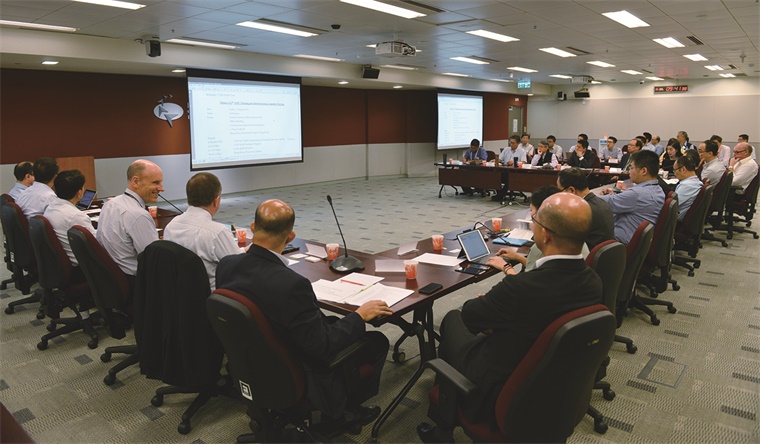
The Third ASBU PIC Meeting was held in July 2018 to review the latest ASBU status and steer relevant planning and implementation in Hong Kong.
Ongoing Development of Safety Management System in Support of the Provision of Safe Communications, Navigation and Surveillance Service as well as Critical Building Service Facilities
During the year, the division continued its momentum in safety promulgation through organising regular safety briefings and issuing quarterly Air Traffic Engineering Safety Advisory Bulletin. With the Fourth Edition of ICAO Doc 9859 - Safety Management Manual officially published in October 2018, briefings were then given to engineering staff and maintenance services providers highlighting the key differences from the previous edition with special attention drawn to the safety interface management with sub-products or subservice providers. Given sufficient performance data collected from the new ATC systems, the division developed a new set of Safety Performance Indicator (SPI)/Safety Performance Target (SPT) for communication, navigation and surveillance (CNS) domains, which was accepted in November 2018.
Training on System Wide Information Management
In recognition of the ICAO initiative and the potential benefits of the System Wide Information Management (SWIM), the CAD has been an active participant of SWIM in the Asia Pacific region. An in-house training by overseas experts was conducted in March 2019 on topics of SWIM infrastructure, application, standards, development as well as experience sharing of SWIM implementation in overseas ANSPs. The training was well received with an attendance of some 50 personnel comprising staff from various divisions of the CAD and other government departments.
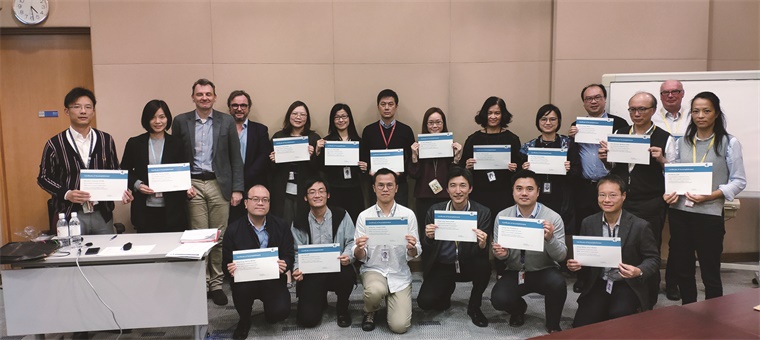
Trainees from the CAD and the Hong Kong Observatory were pictured with their trainers (back row, third and fourth left) after the presentation of Certificates of Accomplishment.
Promotion of Cyber Security
Acknowledging the growing threat of cyber security, AESD took lead to work with ICAO and AAHK to host ICAO Asia/Pacific Regional Cyber Security Symposium in May 2018 to share information and experience gained on cybersecurity with focus on awareness of cyber threats and safety risks, policy, procedure, and innovation and technology from the perspectives of regulators, regional and international organisations, ANSPs and airport operators. Over 170 participants from 14 member states/administrations and four international organisations joined the event. The Symposium did not only promote proactive actions taken in the field of cyber security at regional level, but also encouraged participants to establish concrete methods and procedures to protect aviation network, systems and IT infrastructure.
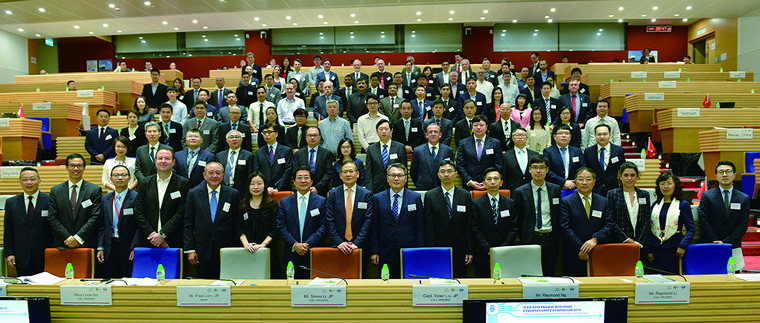
ICAO Asia/Pacific Regional Cyber Security Symposium was held at CAD Headquarters in May 2018 with over 170 participants.
Use of Hong Kong International Airport (HKIA) as Base for Flight Check Aircraft
In accordance with ICAO requirement, routine flight checks for Navigational Aids at HKIA are conducted twice a year, which usually take place in May and November to avoid peak traffic seasons. Timely start of flight check before air traffic building up in early morning is crucial to minimise the potential impact to both HKIA and ATC operations.
The Flight Inspection Center (FIC) of Civil Aviation Administration of China had provided the flight check service at HKIA for many years with the base at Shenzhen airport. With experience gained, attempts were made to optimise the arrangements by fine-tuning of flight check procedures and gradual advancement on flight check start time. Nevertheless, the start time of flight checks could be affected by a number of factors such as weather and delays that might be incurred in Customs, Immigration and take-off clearance, etc. To cater for the rapid air traffic growth, the CAD successfully coordinated with stakeholders including FIC, AAHK and Hong Kong Business Aviation Centre to switch the base from Shenzhen Airport to HKIA for flight checks starting from May 2018.
With much better control in HKIA, punctuality in flight check start time could be achieved in both flight checks conducted in May and November 2018. Positive feedbacks were received from all major stakeholders, including ATC, AAHK, FIC, for the significant improvement in the punctuality of flight check and hence minimising the impact to HKIA operations. Given the encouraging trial in the two aforementioned flight checks, AESD would pursue the continuous use of HKIA as the flight check base.
Satellite-based CNS/ATM Systems
To comply with the ICAO Global Air Navigation Plan, the CAD has formulated implementation plan and progressively put into operational use various satellite-based CNS/ATM systems and services. The Pre-Departure Clearance Two-way Datalink Service, Electronic Flight Strip System and Arrival Manager System have been in satisfactory operation for some years bringing operational benefits to aviation stakeholders and are integrated with the new ATMS. The latest development of the others is highlighted below:
(i) Air Traffic Services Inter-facility Data Communication
The Air Traffic Services Inter-facility Data Communication (AIDC), being one of the key functions integrated in the new ATMS, supports electronic transfer of aircraft with Sanya and Taipei to enhance flight safety and also operational efficiency through the Aeronautical Fixed Telecommunication Network. With satisfactory completion of various tests and trials, AIDC operation for overflying traffic between Hong Kong and Guangzhou also commenced in May 2018. With regard to electronic transfer of flight information with Manila via AIDC, both technical tests and trials were satisfactorily completed, and the operational trial commenced in March 2019.
(ii) Advanced Surface Movement Guidance and Control System
The Advanced Surface Movement Guidance and Control System (A-SMGCS) provides enhanced surveillance of aircraft and vehicle movements on the airfield, with availability of conflict and runway incursion alerting functions for added ATC safety and efficiency in the airport. To cope with the increasingly busy airfield movements and various new infrastructure developments at HKIA, AESD has engaged the equipment supplier in November 2018 to re-assess the signal coverage as well as to enhance the safety alerts.
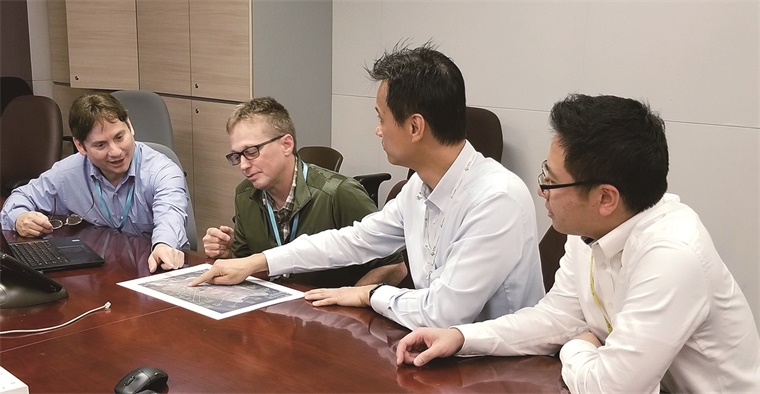
The CAD engineers were reviewing the enhanced signal coverage with the A-SMGCS equipment supplier to cater for the construction of the new Skybridge at HKIA.
(iii) Automatic Dependent Surveillance-Broadcast (ADS-B) System
The phased implementation of ADS-B system within the Hong Kong Flight Information Region was completed in November 2018, which enhances the safety and efficiency of ATC services provided by the CAD. In accordance with the relevant ICAO's guidelines, the CAD would continue monitoring the performance of on-board equipment to ensure the full compliance of requirements for the relevant data transmitted by aircraft.
(iv) Ground-Based Augmentation System (GBAS) Landing System
To augment the precision of aircraft approach and landing operations using the Global Navigation Satellite System (GNSS), the CAD conducted a GBAS Landing System (GLS) trial at HKIA which was successfully completed in early December 2018. The trial served the purpose for proof-of-concept of applying GBAS GLS in support of precision approach procedures at HKIA. The successful outcome of this trial marked a critical milestone for the implementation of satellite-based precision approach and landing at HKIA. The experience gained could also serve as valuable reference for the forthcoming GLS deployment under the project of Three-Runway System.
(v) Airport Collaborative Decision Making
The CAD successfully launched the Airport Collaborative Decision Making (A-CDM) platform in both desktop and mobile versions on the Internet back in 2013 with very encouraging feedback and support from the aviation industry. Building on the sound implementation of the CAD's A-CDM platform, AAHK has further enhanced and extended the A-CDM programme. AAHK has launched an enhanced A-CDM platform for establishing data exchange schemes among aviation community in early 2018, leading to the full A-CDM operations at HKIA. The CAD would continue to fully support and provide advice on technical and operation aspects for enhancing HKIA's overall operational efficiency. To assist in steering the regional development of A-CDM, the CAD continued to actively participate in the ICAO Regional Task Force meetings to share our experience and develop the regional roadmap. The CAD will also continue the support to ICAO's harmonisation of the interoperability of A-CDM with Air Traffic Flow Management (ATFM) as well as the implementation of A-CDM in this region.
(vi) Digital Tower
The CAD has all along been exploring various means and advanced technologies to ensure the provision of safe and efficient ATC services. Accordingly, AESD has been studying the feasibility of implementing the Digital Tower technology in HKIA. Support from the overseas experts has been sought to assist in the study and a trial of this technology has commenced since early 2019. Digital Tower makes use of high-resolution surveillance cameras and artificial intelligence, and displays the digitised video of aircraft and vehicles on runways and taxiways augmented with aircraft/vehicles information, which greatly enhances the visual capability of the controllers.
To promote application of the latest aviation technologies to the general public, the CAD joined the InnoCarnival 2018 held at the Hong Kong Science Park in November 2018 and set up a simulated exhibit of Digital Tower facilities and interactive controllers' working position at the spot. The CAD staff took the opportunity to explain to the visitors the application of the latest aviation technologies to facilitate the airport operation. It was very encouraging to see visitors of different age groups expressing their strong support to the CAD on our work of using new aviation technologies.
(vii) Demonstration of System Wide Information Management
The CAD has been supportive of ICAO initiatives such as System Wide Information Management (SWIM). SWIM, intended to facilitate exchange of flight, meteorological and aeronautical information on a common platform, is an upgrade block under ICAO's Aviation System Block Upgrade initiative. A SWIM demonstration showcasing and facilitating the implementation of SWIM in Asia Pacific region was planned for late 2019 with participants from various Asia Pacific states/administrations. In this connection, Technical Interchange Meetings (TIMs) and teleconferences were held regularly to coordinate the efforts of participants. As a Level 4 (the highest level of participation) player, the CAD has attended the first and second TIMs respectively in April and September 2018 amid regular teleconferences. The CAD looks forward to further collaboration with other participants in upcoming meetings, teleconferences and system development towards the successful conduct of the SWIM demonstration event.
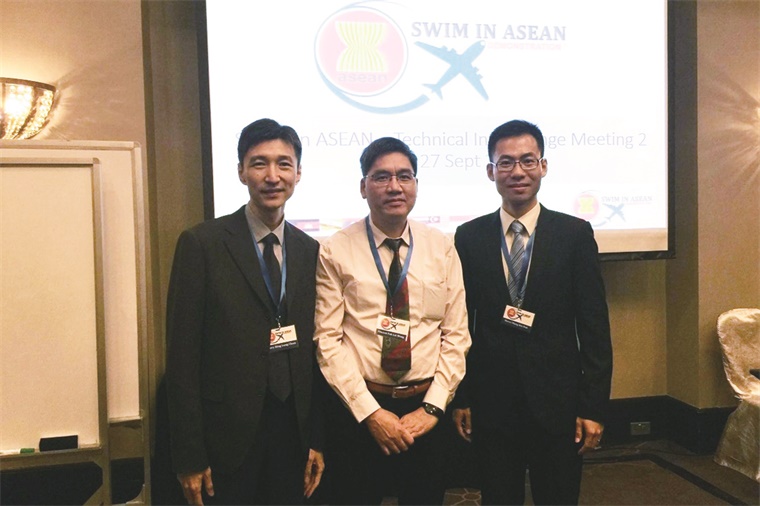
Hong Kong delegation comprising the CAD and the Hong Kong Observatory officers at the second Technical Interchange Meeting in September 2018.
(viii) Asia Pacific Common Regional Virtual Private Network (CRV)
The ICAO's 54th Director-General of Civil Aviation Conference formulated an action for states and administrations to expedite Common Aeronautical Virtual Private Network (CRV) implementation for the region by end 2020 pursuant to their cost benefit analysis. In support of this initiative, the CAD has coordinated with the Civil Aviation Authority of the Philippines (CAAP) to implement CRV for operational use so as to improve efficiency of the Inter Area Speech Circuit (IASC) and Air Traffic Services Message Handling System (AMHS) services between Hong Kong and Manila Area Control Centres (ACCs). The CRV implementation was launched in two phases. The first phase is CRV-Voice supporting the IASC services between Hong Kong and Manila, which has been put into operation since August 2018, marking the first city-pair in the region to migrate the existing IASC to the CRV for operation. The second phase is CRV-Data to support AMHS connection between Hong Kong and Manila. Further to a series of technical trials and safety reviews, the Pre-Operational Trial (POT) has commenced in March 2019.
To provide our continuous support to ICAO and the initiatives in using CRV, the CAD co-organised with ICAO and the CRV service provider to host the Fifth Meeting of CRV Operation Group (CRV OG/5) in January 2019 in CAD Headquarters. About 70 participants, comprising network management experts from ICAO and its member states as well as overseas, local organisations, and representatives of the aviation industry, attended the meeting.
More Green Measures Pursued in New Service Level Agreement
In March 2019, the CAD and the Electrical and Mechanical Services Trading Fund (EMSTF) entered into another new Service Level Agreement (SLA) with validity period of 10 years effective from April 2019 till March 2029 inclusive, with the first five-year period fixed while the second five-year period optional.
Under the terms and conditions of the new SLA, EMSTF will continue to provide a wide range of professional resident operations and maintenance services for the electrical and mechanical systems, building services installations and electronic equipment to support the safety-critical ATC operations.
Riding on the success of the previous experience, the CAD and the Electrical and Mechanical Services Department (EMSD) will continue to implement various energy saving measures in the CAD Headquarters, which include, but not limited to exploiting the functionalities of the Energy Optimisation Solution system, conducting trials of Peak Demand Management programme, identifying retro-commissioning opportunities on electrical and mechanical facilities, etc.
Refurbishment of ATC Complex and South Tower
The refurbishment of ATC Complex (ATCX) and South Tower (S-TWR) had been completed in September 2018. The refurbished ATCX accommodates five operation centres including the backup ATC Centre, Rescue and Coordination Centre, Aeronautical Information Management Centre, Aeronautical Network Centre and Watch Keeping Control Centre. The installation of controllers' working positions and ATC systems had been commenced in October 2018 after the buildings refurbishment works.
Information Technology Management
The Information Technology Management Unit (ITMU) continued to support the day-to-day operations of various CAD divisions through effective implementation of new Information Technology (IT) initiatives and the e-Government strategy. During the year, the following major IT projects were completed for the betterment of IT service and support:
(i) The provision of a prototype platform for Comprehensive Data System (CDS) was started in March 2019. It will provide big data analytics on data related to CAD operations.
(ii) The development of electronic rostering system (e-Rostering) was started in September 2018. The system will increase efficiency and effectiveness in roster management.


